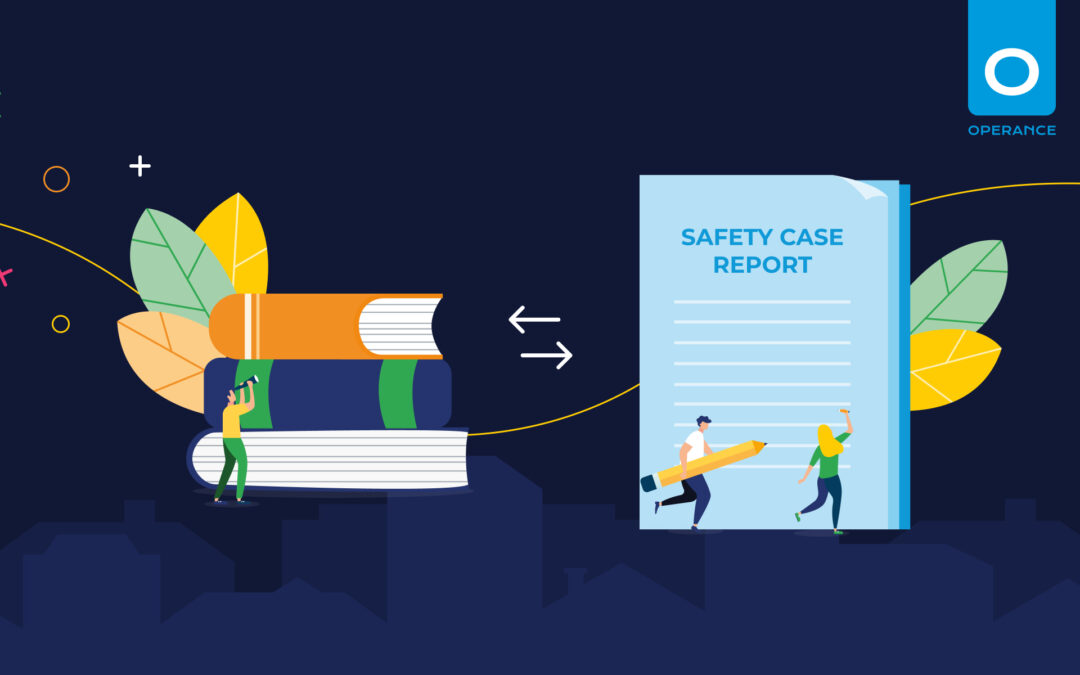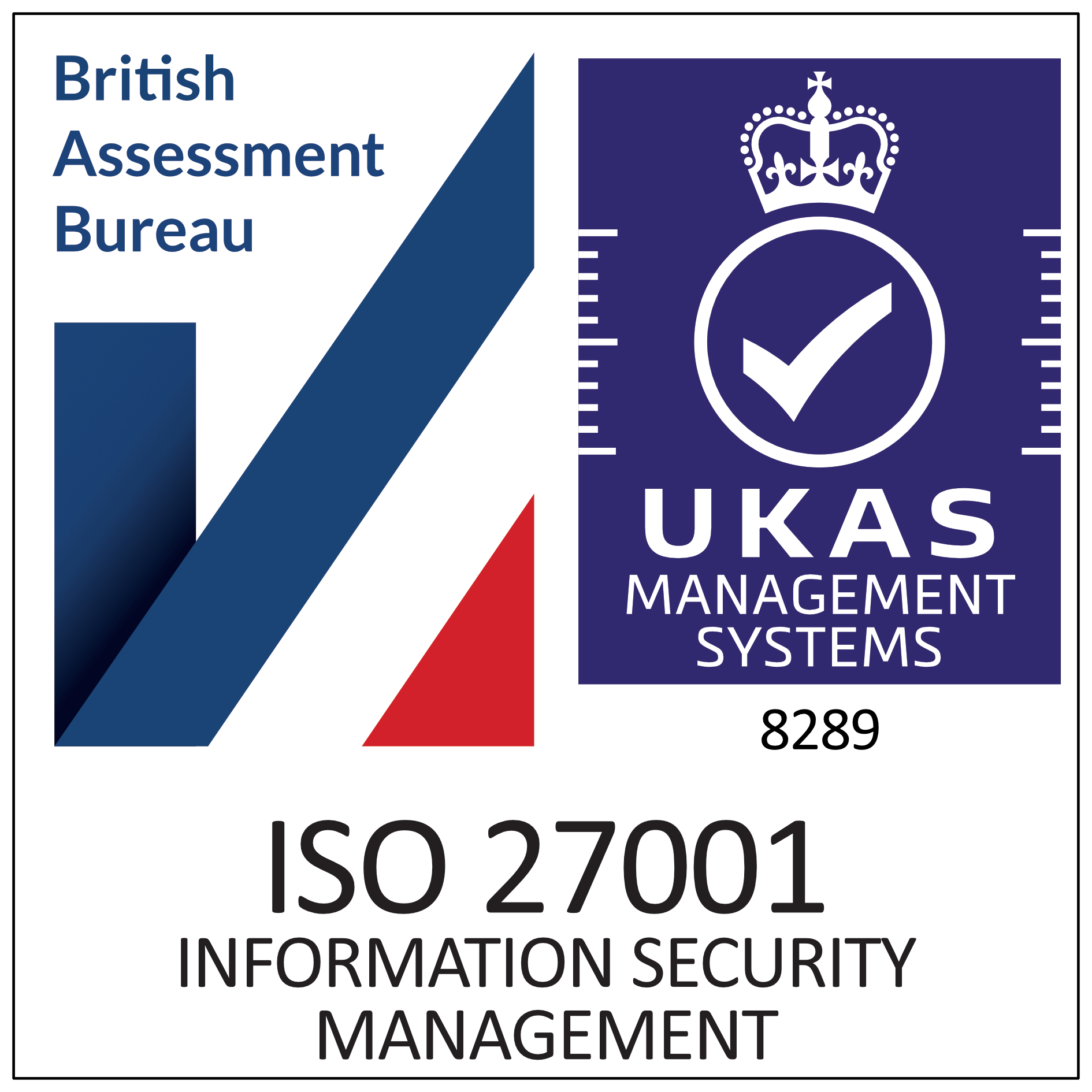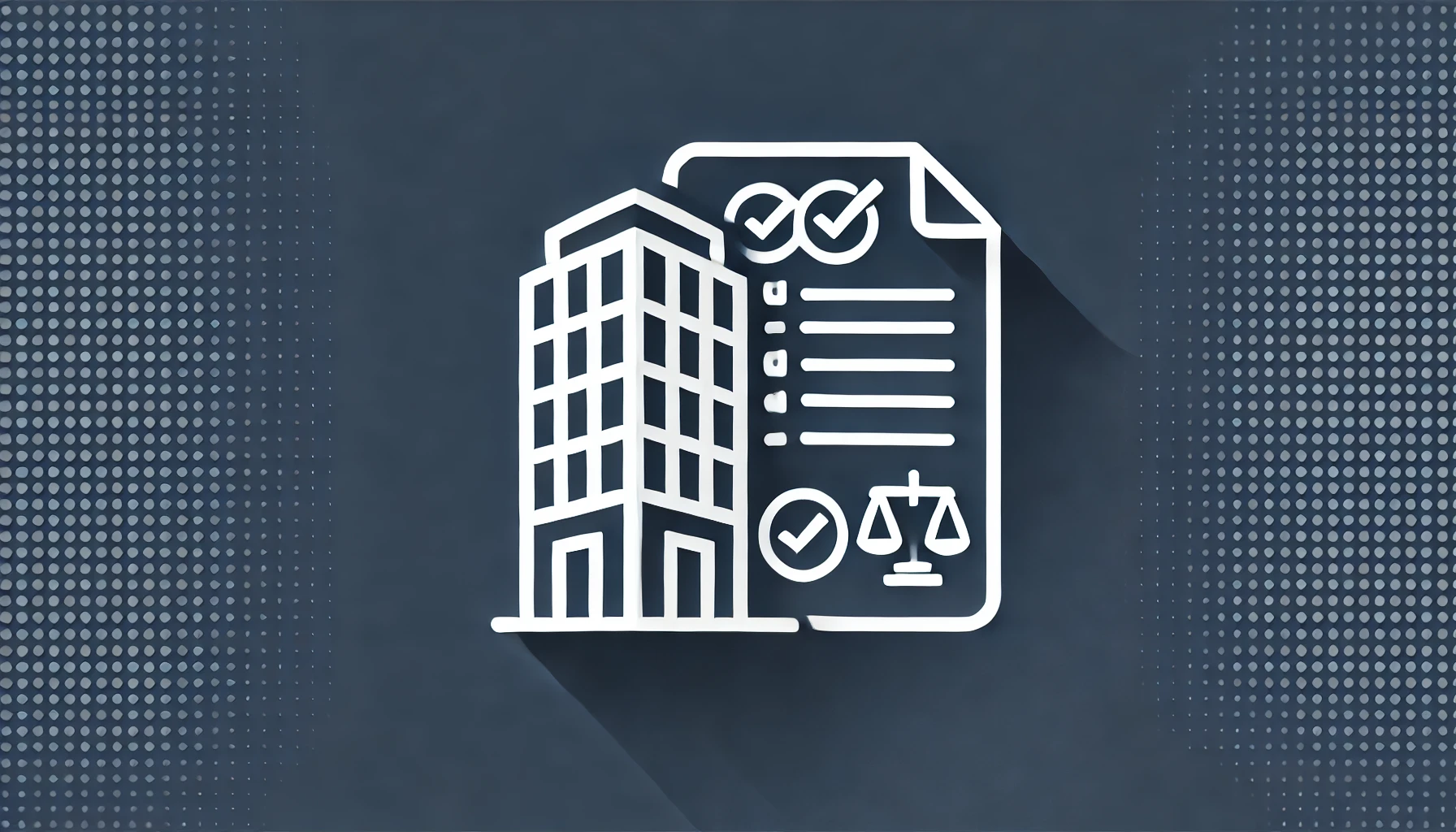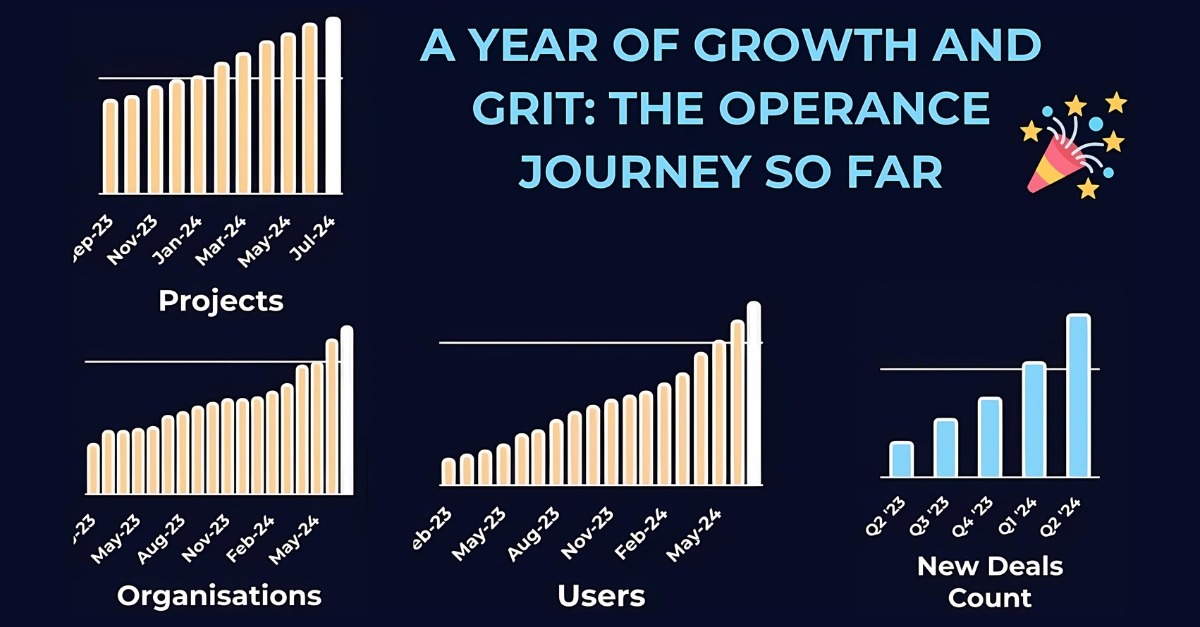A Simple Step-by-Step Guide to Developing Your Safety Case

Intro
Developing a robust Safety Case and its accompanying Safety Case Report is crucial for ensuring the safety of occupants in higher-risk buildings (HRBs).
The Building Safety Regulator (BSR) and the Government (GOV.UK) have been very clear; they will not overly prescribe what information Accountable and Principal Accountable Persons should produce as they are encouraging building owners to instead ‘be curious’ about their buildings.
They have also warned against spending unnecessary time, effort, and resources producing reams of information that bear little relevance to your risk assessments.
Your primary focus should be on producing the risk assessment and then on producing information about the identified risks and how you plan to mitigate them.
In this article, we will therefore help you by describing the Operance Safety Case Workflow: a simple, step-by-step guide that starts with a Safety Case Action Plan, and the development of a comprehensive Safety Case and a summarised Safety Case Report.
But first up, let’s remind ourselves of what the Safety Case and Safety Case Report is, the key differences between the two and just what exactly is a Safety Case Action Plan is.
What is a Safety Case?
Definition: A comprehensive document that assesses and mitigates risks associated with a higher-risk building, outlining safety measures and protocols.
Purpose: To ensure the safety and well-being of occupants by identifying and managing potential hazards and risks in the building.
Contents: Detailed information about the building’s construction, refurbishment, fire safety design, structural safety, MEP safety, resident profile, maintenance information, and more to provide evidence for the key piece of content: your risk assessment.
What is a Safety Case Report?
Definition: A summary document that presents key findings and information from the Safety Case in a concise and accessible manner.
Purpose: To provide a summary of the building’s safety measures, identified risks, and mitigation strategies. It acts as a reference document for the Building Safety Regulator (BSR) to review and assess the building’s compliance with safety regulations.
Contents: Summarised information about your building’s biggest risks and how they are mitigated, along with its construction history, safety measures implemented, maintenance records, certifications, and more.
What is a Safety Case Action Plan?
Definition: A Safety Case Action Plan is a proactive and structured document that outlines the tasks, responsibilities, and timelines associated with developing the Safety Case and ensuring building safety compliance. It serves as a guide to help users assess what needs to be done and in what sequence to create a comprehensive Safety Case.
Purpose: The purpose of a Safety Case Action Plan is to provide a systematic approach to identify, prioritise, and address safety-related aspects of a building. It helps users understand the roles, responsibilities, and tasks involved in developing the Safety Case, ensuring that nothing is overlooked and all necessary information is captured in order to maximise efficiency.
Contents: The contents of a Safety Case Action Plan typically include an initial building assessment to identify the depth, format and competent persons to develop the risk assessment, engagement of key stakeholders, identification of specific tasks and activities, establishment of timelines and milestones, allocation of necessary resources, effective communication and reporting mechanisms, regular review and quality assurance processes, and a focus on continuous improvement.
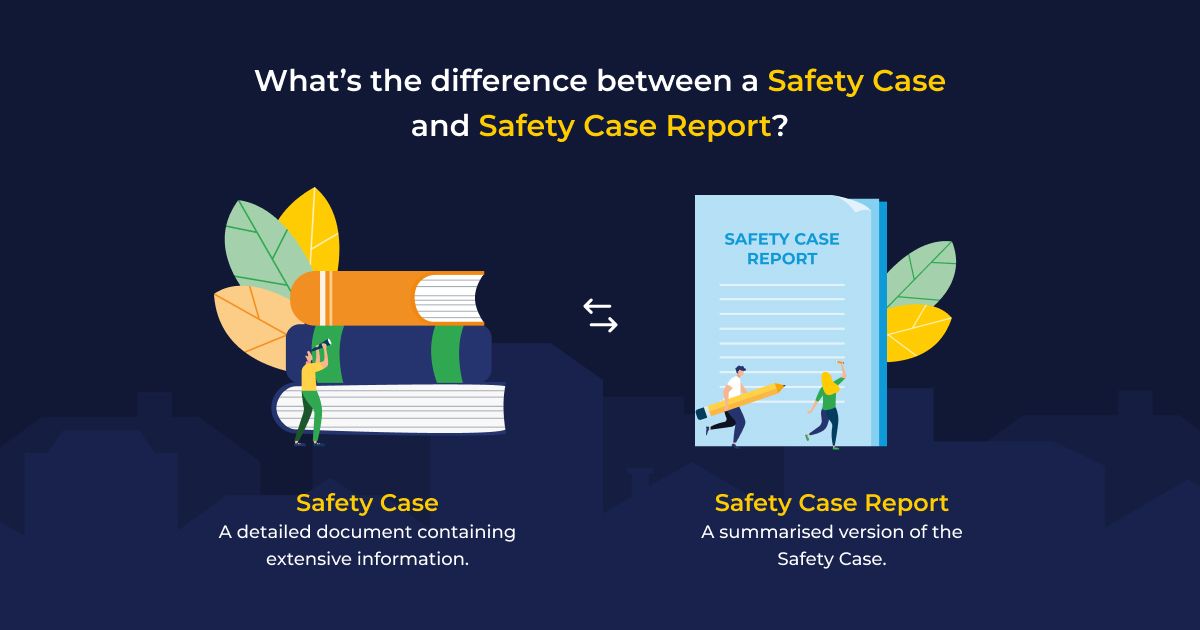
What are the Differences Between a Safety Case, its Workflow, Action Plan and Report?
Safety Case Workflow: A systematic process that outlines the steps and actions required to develop and maintain a safety case, ensuring compliance with regulatory requirements throughout the building safety journey.
Safety Case Action Plan: A proactive plan that identifies and guides the tasks and actions necessary to develop a comprehensive safety case, enabling stakeholders to prioritise and efficiently manage their safety case development process.
Safety Case: A documented argument supported by evidence, demonstrating how a building’s design, construction, and operation address safety risks and comply with building safety regulations, providing a structured approach to managing and mitigating risks.
Safety Case Report: A comprehensive document that presents the findings, analysis, and conclusions of the safety case, including the identified risks, control measures, and safety strategies implemented, providing a detailed overview of the building’s safety measures and compliance with regulatory requirements.
Step 1 – Understand the Regulatory Framework
The first Safety Case Workflow step involves familiarising oneself with the relevant regulatory framework, including the Building Safety Act and associated guidelines, to ensure compliance with safety requirements and obligations.
Here are some useful links:
-
HSE Guidance: https://www.hse.gov.uk/building-safety/safety-cases-reports.htm
-
Building Safety Act: Part 4 – Duties relating to building safety risks (sections 83-86): https://www.legislation.gov.uk/ukpga/2022/30/part/4/crossheading/duties-relating-to-building-safety-risks
-
Consultation on the new safety regime for occupied higher-risk buildings (section 5): https://www.gov.uk/government/consultations/consultation-on-the-new-safety-regime-for-occupied-higher-risk-buildings/consultation-on-the-new-safety-regime-for-occupied-higher-risk-buildings#principles-for-managing-building-safety-risks-and-the-safety-case-report
-
GOV.UK Factsheet (since withdrawn as it is to be replaced sometime later in the year, but still useful): https://www.gov.uk/government/publications/building-safety-bill-factsheets/safety-case-factsheet
Understanding the regulatory framework is crucial as it provides the foundation for developing a robust and comprehensive safety case. By gaining a clear understanding of the regulatory requirements, stakeholders can align their efforts and ensure that all necessary steps are taken to enhance building safety.
Step 2 – Agree the Safety Case Action Plan
In this step, a safety case action plan is created to outline the tasks, responsibilities, and timelines for developing the safety case. It helps in organising and prioritising actions needed to address safety risks and requirements.
The Buiding Safety Regulator (BSR), want you to ‘be curious’ about your buildings, as such, they are not been overly prescriptive about the information you need to provide about your buildings, as every building is individual and will have individual risks associated with them. Therefore, the last thing your organisation should be doing, is running around finding information about your buildings, as you currently have very little idea about what information you need.
Remember, the primary piece of information and, therefore, your focus is the risk assessment.
The information you collect about your buildings should be focussed on backing up your risk assessment. For instance, if you have a 40-year-old HRB in occupation, you do not have to go and instruct building surveyors and structural engineers to carry out trial holes and investigations to determine your foundations if there is no risk associated with the structural stability of the property, such as evidence of movement, subsidence, cracks etc. Instead, you should assess the risks associated with your foundations, determine that there is no risk, explain and provide evidence, then move on to the next risk.
We have already heard stories of organisations pulling together paper, pdf and digital information about their HRBs, only to then think about what parts of it they actually need for their Safety Case. This can be a very costly and time-consuming exercise.
We have also heard stories of organisations instructing ‘Digital Twin’ vendors produce laser-scans of their HRBs in which to develop 3D BIM models, as they have been sold the idea that these are imperative to producing the digital golden thread of information. This is incorrect; Dame Judith Hackett recommended the use of Building Information Modelling (BIM), as a process for creating structured building data. She did not suggest populating, storing and sharing information via complicated 3D models. The two things are very different, please do not spend your valuable resources on this unless you have an agreed organisational objective for doing so.
We have also seen ‘Asset Management’ software vendors selling the idea that the golden thread is all about having extensive information about individual assets, with little focus on the primary need, risk prevention. Whilst information about assets is of course useful, it is only important if the assets are associated with risks relating to fire, structural and MEP safety.
Lastly, we have seen organisations sign up to expensive, long-term enterprise licenses with ‘Common Data Environment (CDE)’ vendors that promise to store your golden thread in their filing system. But this has little benefit to the golden thread unless you are able to edit, update and continue supplementing the information against the actual entity it is relevant too. So adding reams of PDFs to an extensive filing system is not really going to help.
This is why Operance developed its unique Safety Case Action Plan:
The Safety Case Action Plan offers a comprehensive planning approach that enables users to prioritise tasks, streamline the development of a compliant Safety Case and Safety Case Report, and achieve significant time and cost savings, ultimately enhancing the efficiency and effectiveness of the process.
Here’s an insight into our Safety Case Action Plan prompts users to think, before they act:
Initial Assessment:
- Identify the building’s characteristics, risks, and hazards.
- Conduct site inspections and gather relevant data.
Stakeholder Engagement:
- Involve key stakeholders to ensure a comprehensive understanding of the building and its safety requirements.
- Define roles, responsibilities, and tasks for each stakeholder.
Task Identification:
- Break down the safety case development process into specific tasks.
- Determine the sequencing and dependencies of tasks.
Timeline and Milestones:
- Establish a timeline for completing each task and milestone.
- Set realistic deadlines based on available resources and regulatory requirements.
Information Gathering:
- Collect relevant information, such as building plans, maintenance records, and inspection reports.
- Analyse data to identify risks and prioritise actions.
Task Assignment and Monitoring:
- Assign tasks to appropriate stakeholders.
- Monitor progress and provide the necessary support throughout the process.
Review and Approval:
- Conduct internal reviews to ensure compliance and quality.
- Obtain necessary approvals from regulatory authorities.
Continuous Improvement:
Establish mechanisms to monitor and update the Safety Case Action Plan regularly.
Learn from experiences and adapt the plan as needed.
The Safety Case Action Plan serves as a roadmap for stakeholders, ensuring a systematic and structured approach to developing the safety case. It facilitates effective planning, resource allocation, and collaboration among the involved parties, streamlining the overall process and maximising efficiency.

Step 3 – Conduct the Risk Assessment
The risk assessment is a critical step that involves identifying, analysing, and evaluating potential hazards and risks associated with the building. It helps in understanding the specific risks and developing appropriate mitigation strategies
You should collect detailed information about the higher-risk building, including its construction history, refurbishment works, and resident profiles. Conduct thorough risk assessments to identify potential hazards and vulnerabilities associated with the building.
Assessment:
- Evaluate potential risks and hazards associated with the building.
- Identify appropriate risk mitigation strategies.
Mitigation Measures:
- Define and implement specific measures to mitigate identified risks.
- Ensure compliance with relevant regulations and standards.
Develop Safety Measures and Document Findings
- Based on the identified risks, design and implement appropriate safety measures.
- Document all findings, including risk assessment reports, safety measures implemented, certifications, testing reports, and maintenance records.
Conducting a comprehensive risk assessment allows stakeholders to identify potential hazards and vulnerabilities within the building. By analysing and evaluating these risks, they can implement targeted control measures and mitigation strategies, minimising the likelihood of incidents and ensuring the safety of occupants and the surrounding environment.
Step 4 – Develop the Safety Case
This step focuses on creating the Safety Case, which demonstrates how risks are managed, safety measures are implemented, and compliance with regulatory standards is achieved. It provides a structured and evidence-based approach to building safety.
Engage Stakeholders and Seek Feedback:
- Engage relevant stakeholders, including building owners, residents, contractors, safety consultants, and regulatory authorities.
- Seek their input, address concerns, and ensure effective communication throughout the Safety Case development process.
Data Collection and Analysis:
- Gather relevant data and information to support the Safety Case.
- Analyse data to assess the building’s safety performance.
Documentation and Reporting:
- Prepare the Safety Case document, outlining the building’s safety measures, risk management strategies, and compliance evidence.
- Include supporting documentation, such as inspection reports, maintenance records, and certifications.
Developing the safety case involves compiling relevant information, such as risk assessments, safety procedures, maintenance plans, and emergency response protocols. It ensures that all necessary measures are in place to mitigate risks, enhances transparency, and provides a comprehensive overview of the building’s safety measures.
Step 5 – Prepare the Safety Case Report
The safety case report summarises the key findings, analyses, and conclusions of the safety case. It presents a concise overview of the building’s safety measures, including risk mitigation strategies and compliance status. But it’s not just for the BSR, all stakeholders should have access to it!
Communication and Engagement:
- Engage with building occupants and stakeholders to gather feedback and address concerns.
- Communicate the Safety Case findings, actions taken, and ongoing safety measures.
Reporting:
- Prepare the Safety Case Report, summarizing the key findings, safety measures, and risk mitigation strategies.
- Provide clear and concise information for stakeholders and regulatory authorities.
Accessibility and Distribution:
- Ensure the Safety Case Report is easily accessible to relevant parties.
- Distribute the report to building owners, occupants, and regulatory authorities as required.
Review and Updates:
- Periodically review the Safety Case Report to reflect changes in building conditions, regulations, or best practices.
- Update the report accordingly and communicate any revisions to stakeholders.
The safety case report serves as a comprehensive document that showcases the building’s safety efforts and compliance with regulatory requirements. It provides an essential resource for stakeholders, regulatory authorities, and the Building Safety Regulator, facilitating effective communication and assessment of building safety.
Step 6 – Submit the Safety Case Report
This step involves submitting the safety case report to the Building Safety Regulator (BSR) for review. It initiates the regulatory evaluation process to ensure compliance with safety standards and regulatory requirements.
Final Review of the Safety Case Report
- Check all relevant information and documentation required for the Safety Case Report as per the Building Safety Act’s guidelines following any stakeholder input.
- Ensure the Safety Case Report includes a comprehensive assessment of the building’s safety measures, risk mitigation strategies, and compliance with regulatory standards.
Utilise the Operance platform for submission
- Navigate to the Safety Case Report within the Operance platform and share or create a link to this with the Building Safety Regulator (BSR).
- Sharing the Safety Case Report within Operance initiates the submission process by inviting the BSR to review the Safety Case Report electronically via the Operance platform.
Submitting the safety case report to the BSR allows for an independent assessment of the building’s safety measures and compliance. It ensures that all necessary information is provided, and any potential issues or areas of improvement are identified, facilitating a comprehensive review and promoting ongoing building safety.
Step 7 – Respond to BSR Feedback
Upon receiving feedback from the BSR, stakeholders must address any queries, concerns, or suggestions raised. It involves revising and enhancing the safety case report as necessary to ensure compliance and alignment with regulatory expectations.
Review BSR feedback
- Receive feedback from the BSR regarding the submitted Safety Case Report, which may include questions, queries, or suggestions for improvement.
- Carefully review the feedback provided by the BSR to understand their concerns, requirements, or areas that need further clarification or enhancement.
Address BSR feedback
- Revise the Safety Case Action Plan to ensure all key points have been clarified and prioritised, assigned and given a timescale against them.
- Take necessary actions to address the feedback received, which may involve providing additional information, revising certain sections of the Safety Case Report, or addressing specific concerns raised by the BSR.
- Ensure that the modifications made in response to the BSR feedback align with the building’s safety objectives, comply with regulatory standards, and effectively address the identified risks and safety measures.
- Resubmit your Safety Case Report.
Responding to BSR feedback is crucial to address any identified gaps, improve the safety case report, and ensure that all necessary information is adequately addressed. It fosters collaboration between stakeholders and the BSR, enhancing the overall quality and effectiveness of the safety case documentation.
Conclusion
Developing a robust Safety Case Workflow is essential for ensuring building safety and compliance with the regulatory framework outlined in the Building Safety Act.
By following the Operance step-by-step process, stakeholders can systematically address safety risks, create comprehensive safety cases, and submit the necessary documentation to the Building Safety Regulator.
The Operance SAafety Case Workflow approach promotes transparency, collaboration, and accountability throughout the building safety journey.
Implementing an effective Safety Case Workflow not only enhances the safety of occupants and the surrounding environment but also demonstrates a commitment to building safety and regulatory compliance.
With the right tools and processes in place, stakeholders can navigate the complexities of building safety with confidence, driving a culture of continuous improvement and creating safer built environments for everyone.

NEWSLETTER
Revolution Is Coming
Subscribe to our newsletter so we can tell you all about it.
You can unsubscribe at any time and we don’t spam you.






